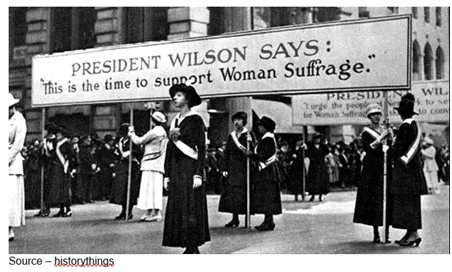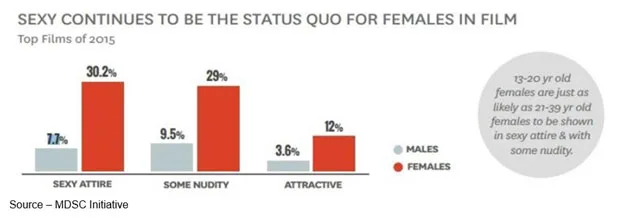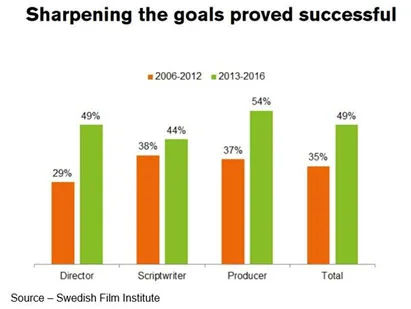Diversity in M&E Should Be the Norm, Not the Exception

Sometimes my daughter and I don’t see eye-to-eye when it comes to movies.
After seeing the tentpole fiction movie Wonder Woman, she summed up the movie saying, “She was a total badass!” (I think she picked that line up from Rotten Tomatoes)
Yes, it was all about female empowerment; but what was also celebrated was that it was done by a very strong, very talented director–Patty Jenkins.
After so many of their comic book superhero movies fell on their behinds recently, the Wonder Woman duo was a pretty big risk for Warner Bros. Especially when you’re talking about a budget of $150M.
Even in Hollywood, that ain’t chump change.
While roughly 50 percent of the world’s population is female, the M&E (media & entertainment) industry has never been accused of being representative of the “real” world.
Nope it has traditionally been so male, so white, so straight.
I never really thought much about it until I attended the HPA (Hollywood Professional Association) WIP (women in post) luncheon at the annual SMPTE (Society of Motion Picture & Television Engineers) conference.
Oh, they welcomed me; but jeezz, did I feel like a minority!
I’ve come to know a lot of very talented women in the industry but it was always as individuals.
Suddenly, I was surrounded by a whole lot of females who seem to focus on a common goal…change the way the industry works.
It turns out that once you look at the facts behind what you see on the screen – theater, TV, computer, smartphone, gender segregation plays out at every level in the industry.

Fifty percent of the population shouldn’t have it that tough:
- Nearly 100 years ago, U.S. women got the right to vote
- 50 years ago, the U.S. equal-pay, anti-discrimination legislation was passed (still a work in progress)
- Female participation in the workforce is growing dramatically
- Inequality persists
Melissa Goodman, ACLU (American Civil Liberties Union) Southern California attorney, summed up the problem when she said, “The systematic discrimination in the hiring of women to make our most powerful cultural products – TV and film – has a direct effect on actual discrimination that happens out in the world to women and girls. Doing nothing or being silent means you’re actually part of the problem.”
In other words, it’s pretty hard for the M&E industry to effect change when its own house isn’t in order.
And while it’s all about making money for stakeholders, visual storytelling is the most effective form of communications we have today.
The one area that is most glaring to everyone on the planet is the big celebration the industry holds for itself, the Oscars.

Academy Awards have been for white males since the beginning.
In 1976 Lina Wertmuller cracked the celluloid ceiling for a film I confess I never saw, Seven Beauties.
Then there was another dry spell with only token nominations until Kathryn Bigelow actually won an Oscar for The Hurt Locker.
Looking behind that slight, the MDSC (media, diversity & society change) study by USC (University of Southern California) Annenberg found out that:
- 29 women (4.1 percent) of the top grossing films for 2007-2015 had female directors
- 9 percent of the directors were female in the 2014 leading films
- In 2015, there were 12.4 male directors for every female director (7.5 percent) calling the shots on the top-grossing films
- It’s worse if you’re not white – three were African-American between 2007-2015 and one Asian

It turns out, gender segregation exists at every level of the industry … behind-the-scenes and onscreen.
Looking at directors, writers, and producers working on the top films in 2015, the Initiative found:
- 8 percent of writers were women
- 22 percent of producers were women
- Only one composer was a woman.
In 2014, women occupied 28.7 percent of those roles in films.
What You See
In our household, we’re split according to the global average – 50 percent guys, 50 percent gals– actually, globally, women represent 50.4 percent of the population, but close enough.
And they all have an equal voice.
Actually, my son and I contend that the females in our family have a more equal voice; but again, close enough.
But in the movies that document our world, it’s totally different:
- 4 percent of the leads, co-leads were women
- Five portrayed female lead/co-lead 45 years of age or older
- 18 percent had a gender-balanced cast
- 3 percent were underrepresented racial/ethnic groups
- Nearly half had no Asian characters, 17 had no African-American characters
That can be changed by thinking about the global audience.
What really needs to change though is how females are portrayed.

The MDSC initiative found that females were over three times more likely to be shown sexually (including nudity or referred to as physical attractive) than their male counterparts.
Images like that help perpetuate female sex trafficking and violence.
Increasingly, people like Sue Lawson, a Chicago-based award-winning editor of documentaries, corporate videos and feature films (ChicagoEdit), are putting the spotlight on the subject. She recently completed work on a documentary on sex-trafficking in the Midwest and the lives of prostituted women entitled Breaking Free from the Life of Sex Trafficking and Prostitution.
A project she worked on with a passion, she repeated a statement from one of the subjects in the film, “No little girl dreams of being a prostitute.”
 Fortunately she’s not alone because similar female and child abuse film projects like this one are being produced by independent filmmakers and celebrities alike to raise awareness of the fact that sex trafficking and prostitution are violence against women and perhaps the oldest form of oppression.
Fortunately she’s not alone because similar female and child abuse film projects like this one are being produced by independent filmmakers and celebrities alike to raise awareness of the fact that sex trafficking and prostitution are violence against women and perhaps the oldest form of oppression.
In fact, with the increasing demand for streaming content, female filmmakers have an even greater opportunity to make their mark in the industry.
Global services that include studios, networks, Hulu, Amazon, Vimeo, Sky, Tencent, Netflix, Hotstar, Voot, OSN, icflix, Eros Now, YouTube, Facebook, Now.TV, Orange, Canal + and more present a world of opportunities.
Yesterday’s reasons don’t hold water today:
- There are very few competent female filmmakers.
- Women don’t get to make their second and third films.
- Counting the percentage of women, compared to men, doesn’t lead to equality.
- There aren’t as many young women as men who dream of becoming a film director.
- Those in power have no desire to see things change.
While Hollywood may still be what USC Annenberg’s Dr. Stacy Smith referred to as “the epicenter of cultural inequality,” the problems are being addressed by men and women around the globe.
Need a good example?
All we have to do is look at what the Swedish film industry has done in recent years.

In three years (2013-2016), the Swedish Film Institute managed to achieve greater gender equality in film funding; and women directors have won awards at home and internationally.
At last year’s Almedalen Week, they announced Goal 2020 and four specific goals:
- Women in key roles in more and larger productions
- Increased visibility of Nordic women in film
- Constant monitoring of global gender equality–both behind and in front of the camera
- Increased knowledge about gender and diversity through an annual film education seminar for teachers, film educators
Their goal is pretty simple – everyone who lives in Sweden should be able to recognize, and identify with, the stories that are created.
By featuring people of different backgrounds and life experiences, the entire M&E industry might be able to fulfill its destiny of enabling a wide variety of artistic expressions.
At the very least, I won’t have to feel like I totally don’t belong at next year’s WIP luncheon.
 The one thing I definitely don’t want my daughter or Wonder Woman to say is, “You obviously have little regard for womanhood. You must learn respect!”
The one thing I definitely don’t want my daughter or Wonder Woman to say is, “You obviously have little regard for womanhood. You must learn respect!”
# # #